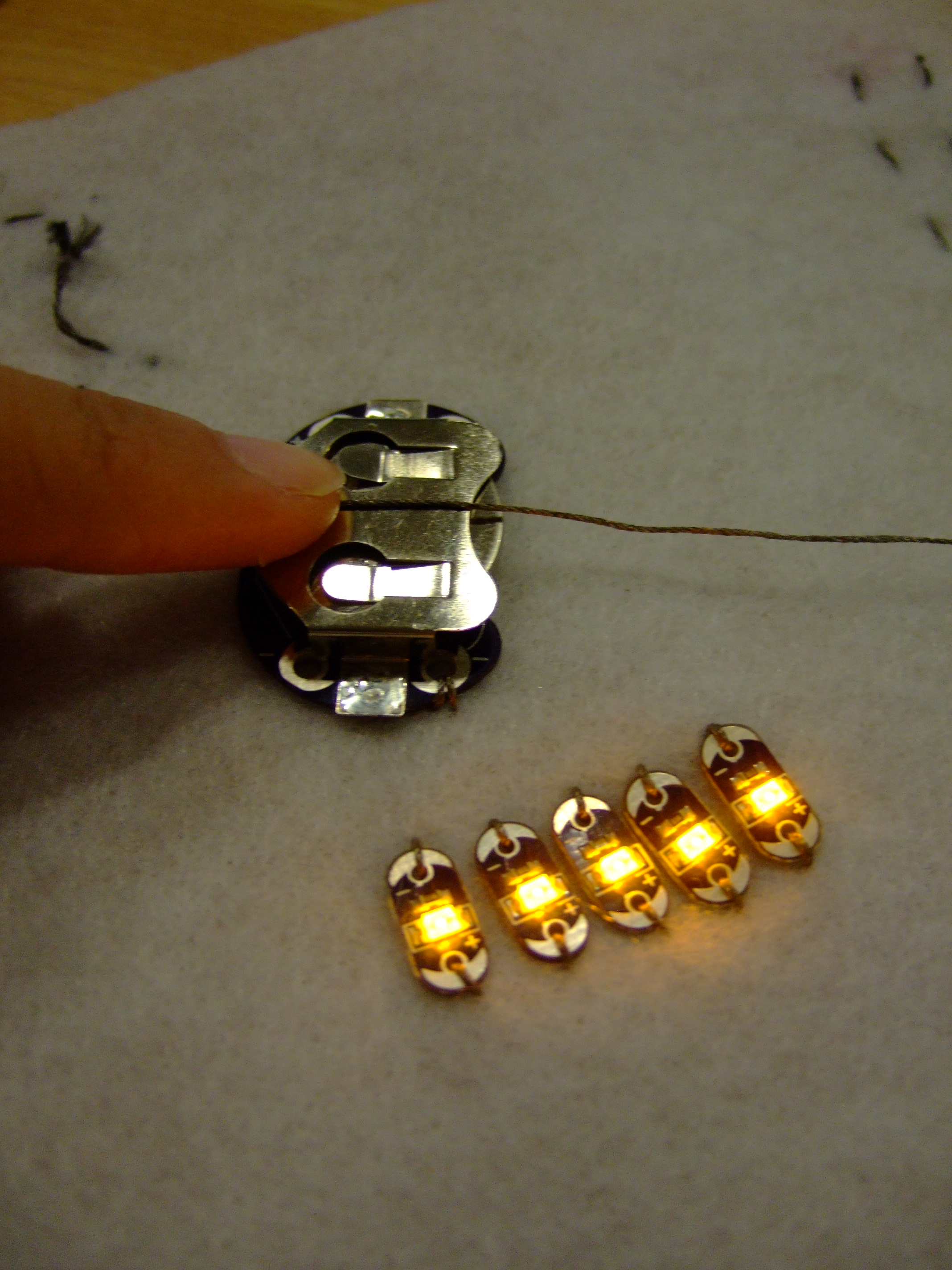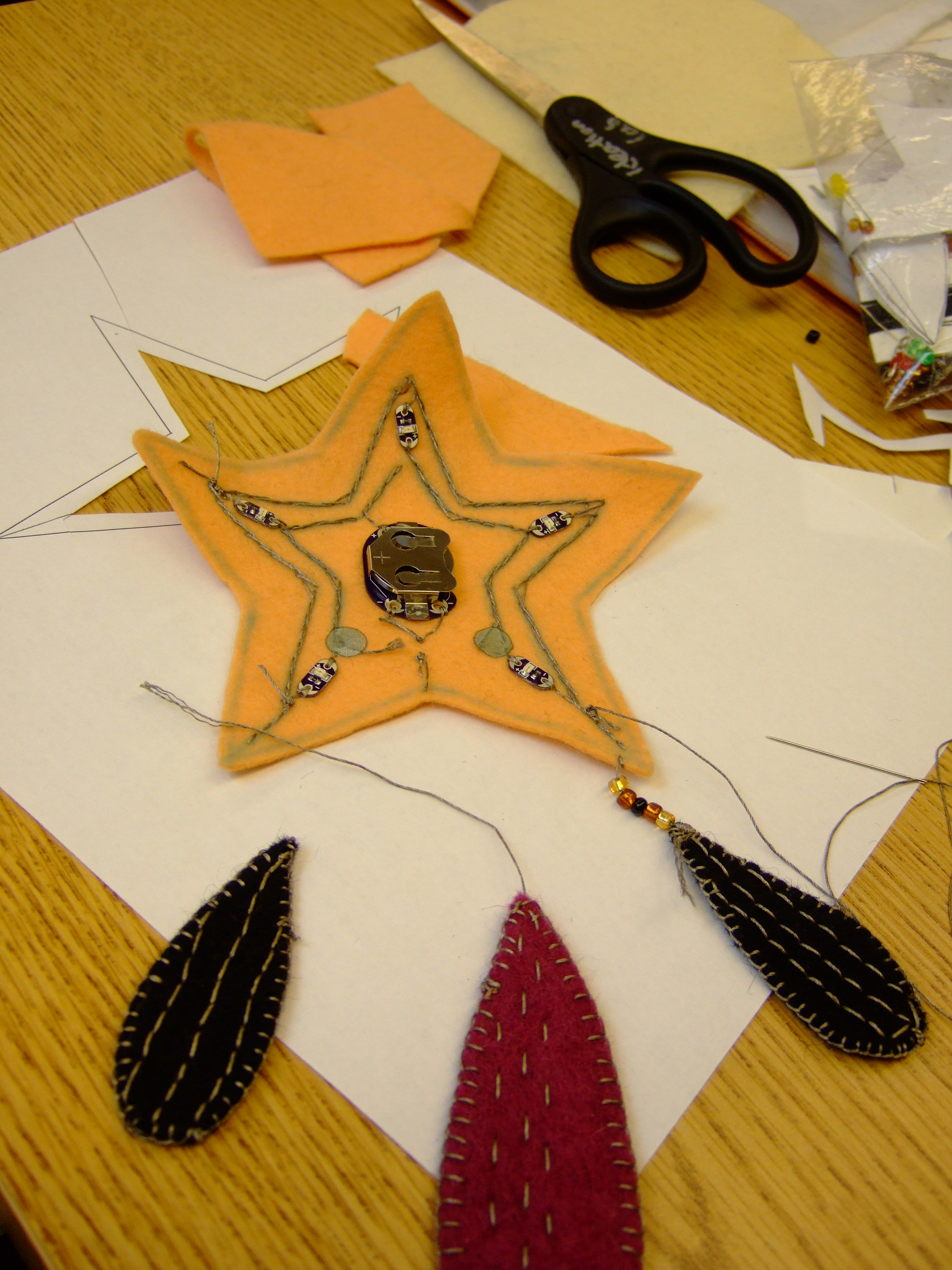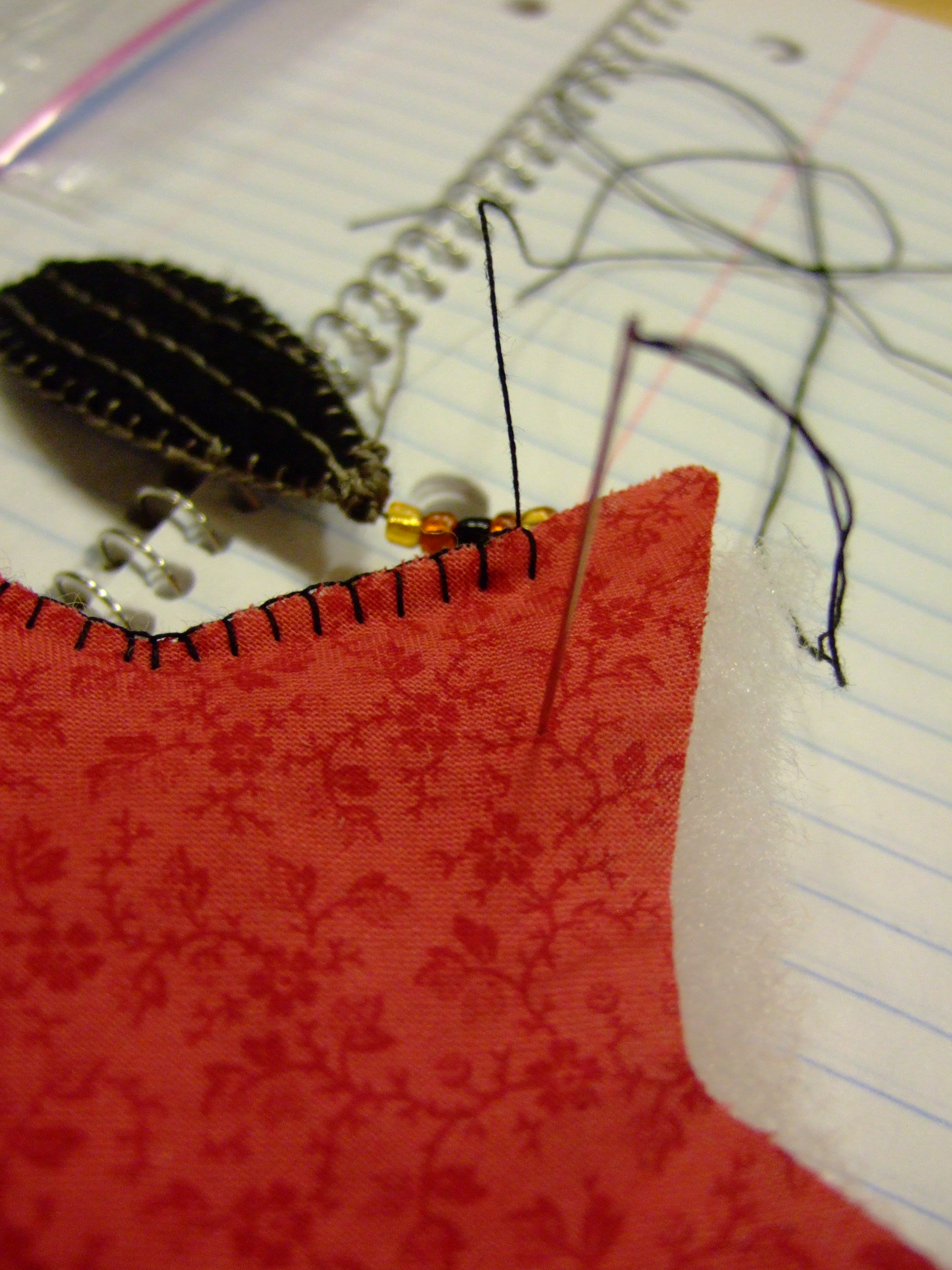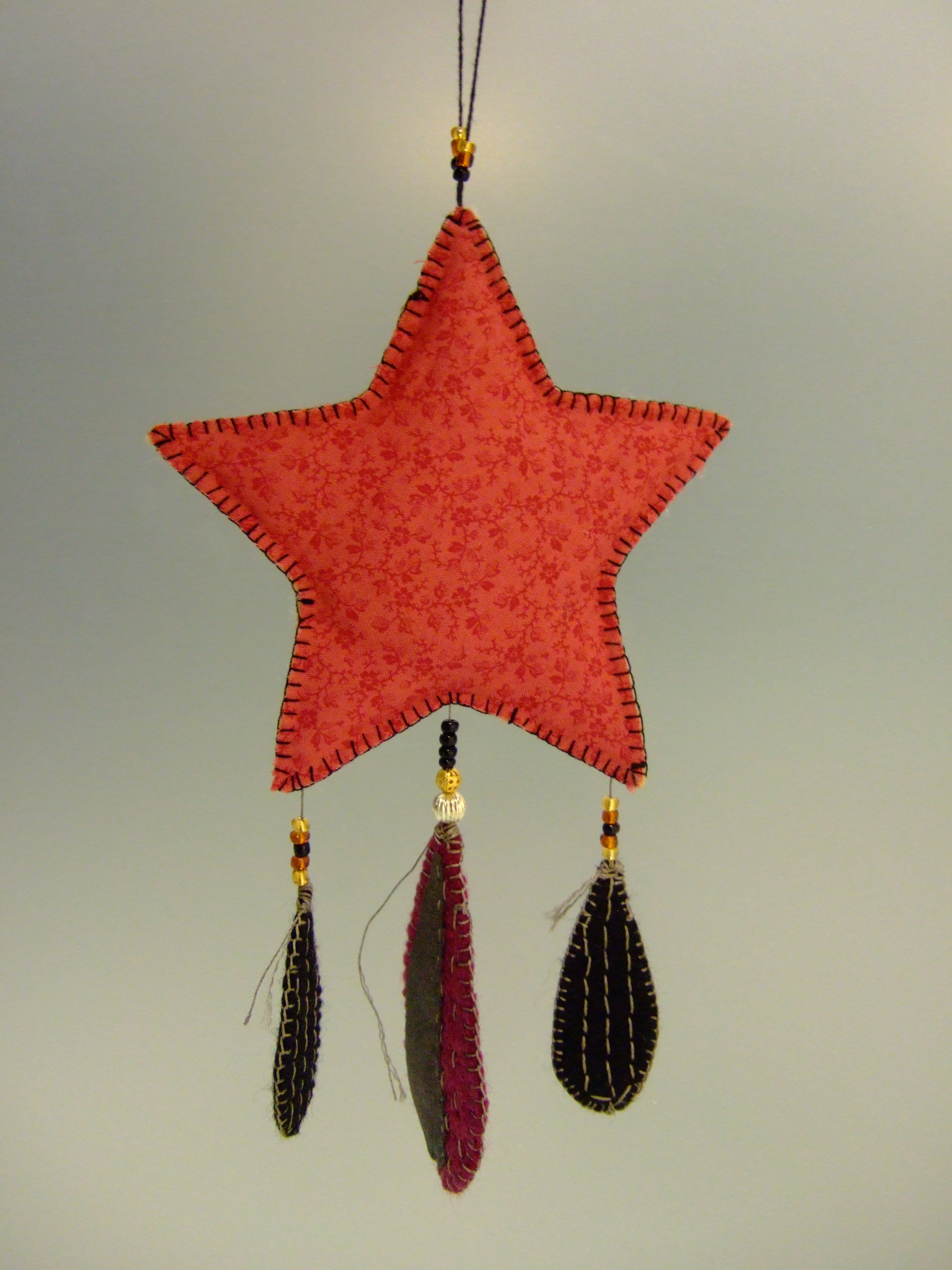Heidi’s Shooting Star
by heidiqc
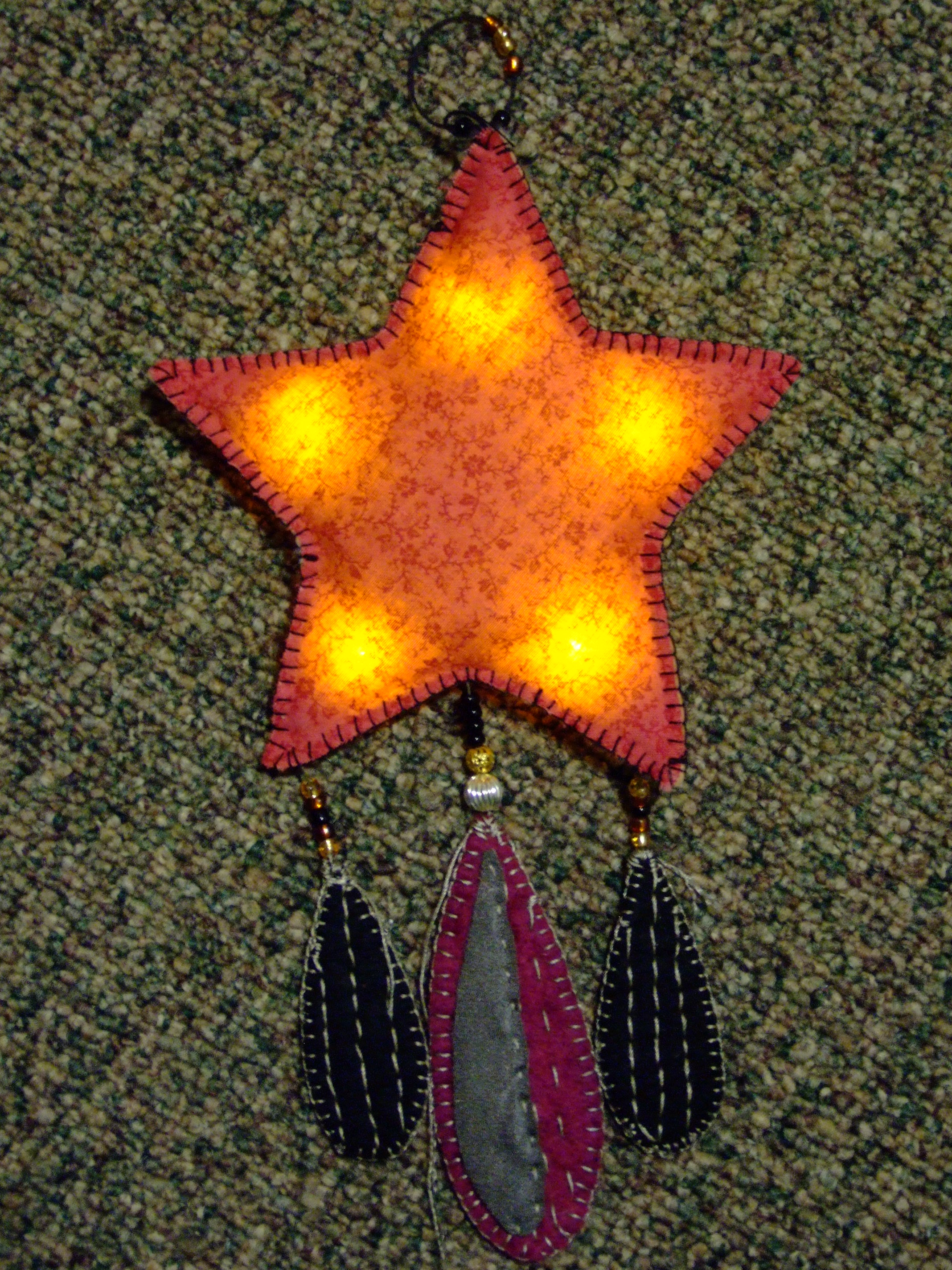 Description:
Description:
The shooting star is designed to be something like a lit up version of a wind chime. The idea is that the star would flicker and glow when the wind blows (or when an object brushes past it), somewhat like how the stars flicker in the night sky.
The textile circuit is constructed out of 5 yellow LEDs, a 3V battery, and silver plated conductive yarn (with a resistance of about 3 Ohms per inch). The shape of the main circuit is a star, and the LEDs are arranged to light up the arms. The 3 droplet shaped streaks form the 2 switches of the circuit, and the circuit is closed when the center purple streak contacts the side black streaks. The streaks are felt, sewn over with conductive thread and a bit of conductive fabric.
Process:
After settling on the star idea, I made a paper prototype just to aid in the visualizing process. Subsequently, I tested out the circuit with the 5 LEDs to make sure that it would work and the wiring was correct. Finally, when the circuit was sewn onto the felt backing and tested, I added polyester stuffing, beads, and the top patterned layer for aesthetic appeal. The back showing the conductive yarn was left exposed as I like the shape of the circuit. A slit was cut in the back to form a slot for the battery to be easily replaced or removed.
Watch video of completed product on YouTube
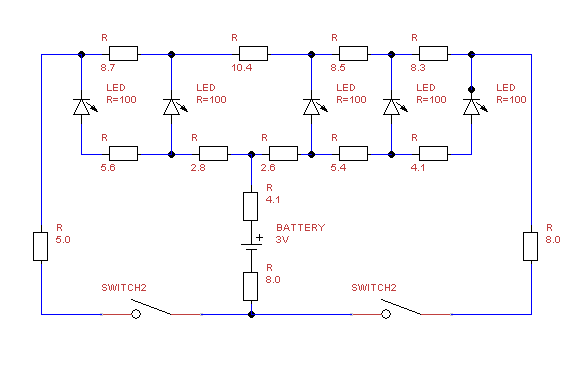
Electrical Measurements and Analysis:
Using the multimeter, I measured the resistance of:
- Each LED (R=100 Ohms)
- Each conductive yarn trace in the circuit – represented as resistors in the circuit diagram above
Unfortunately, the circuit cannot be reduced to an equivalent parallel or series resistor chain as the battery is positioned in the middle of the parallel chain, thus the total resistance of the circuit was not calculated. While measuring the resistances, I noticed that the resistance of the yarn varies with pressure applied, and there was difficulty obtaining consistent values. As I used backstitch for many parts of the circuit, the resistance would also change as the fabric was moved and the individual yarn segments touched or lost contact with each other. This made it particularly challenging to measure.
The battery’s voltage was measured to be 2. 932V, and the current through the circuit was 14.7mA for the left arm and 14.6mA for the right arm.

